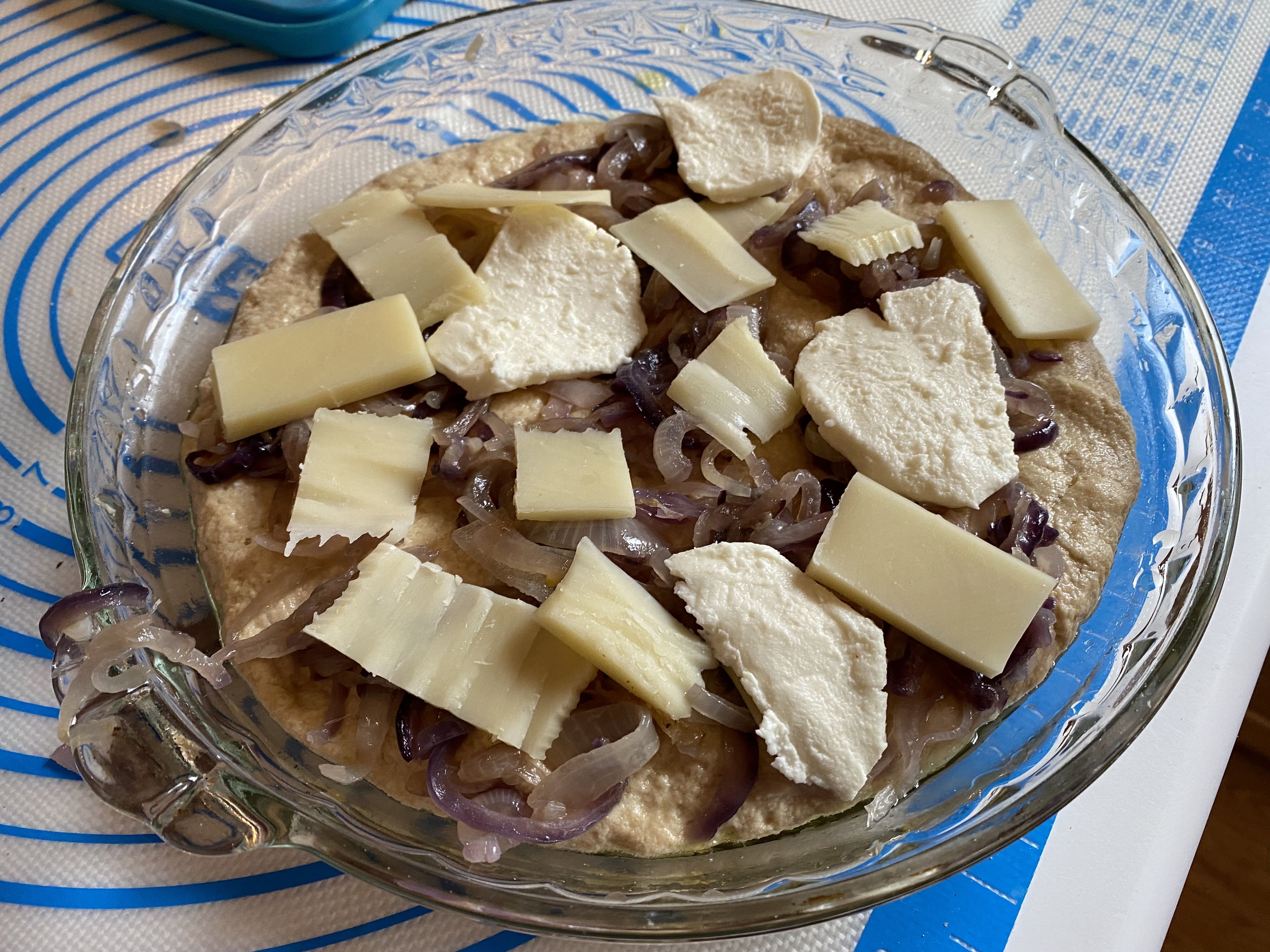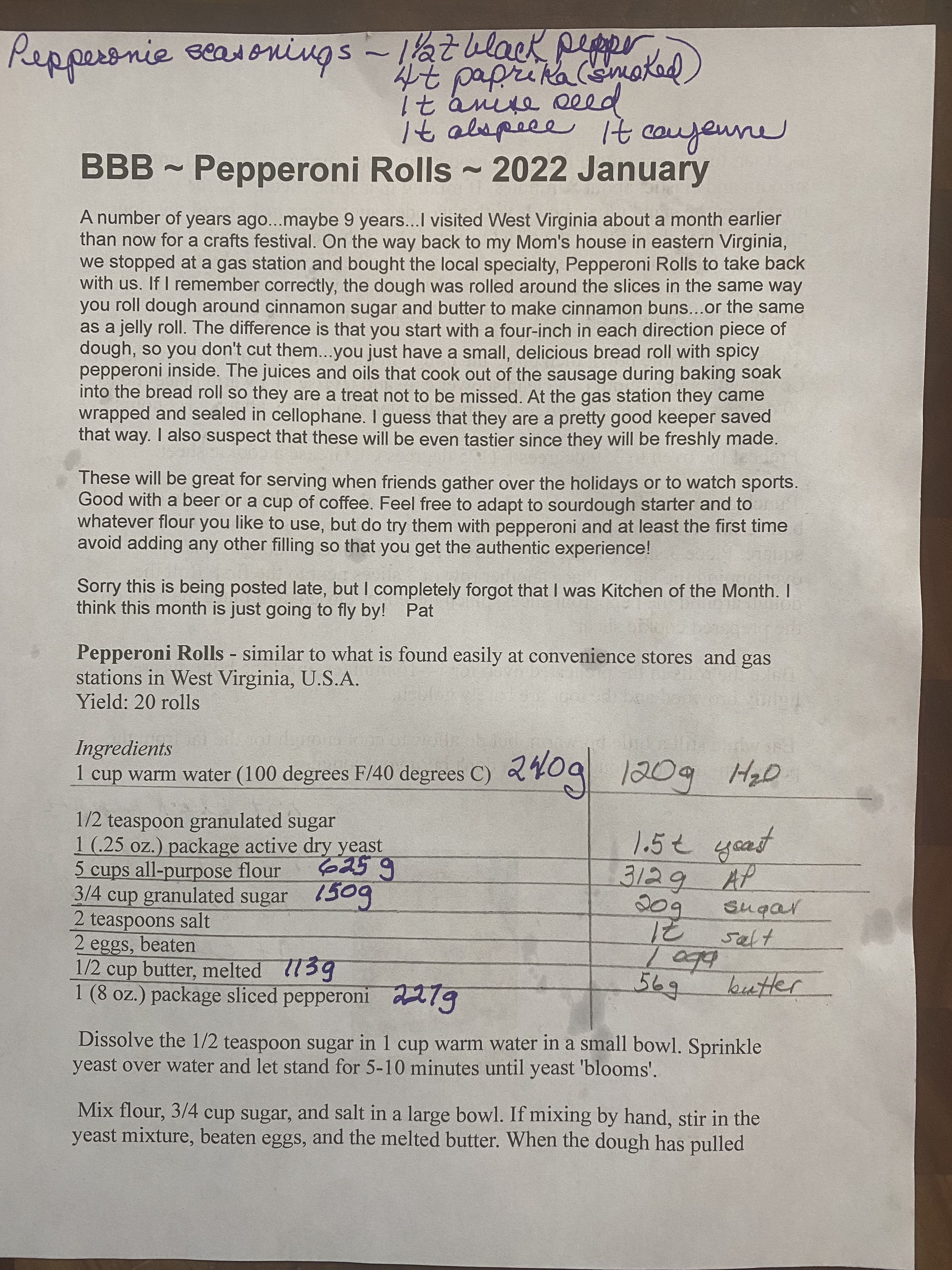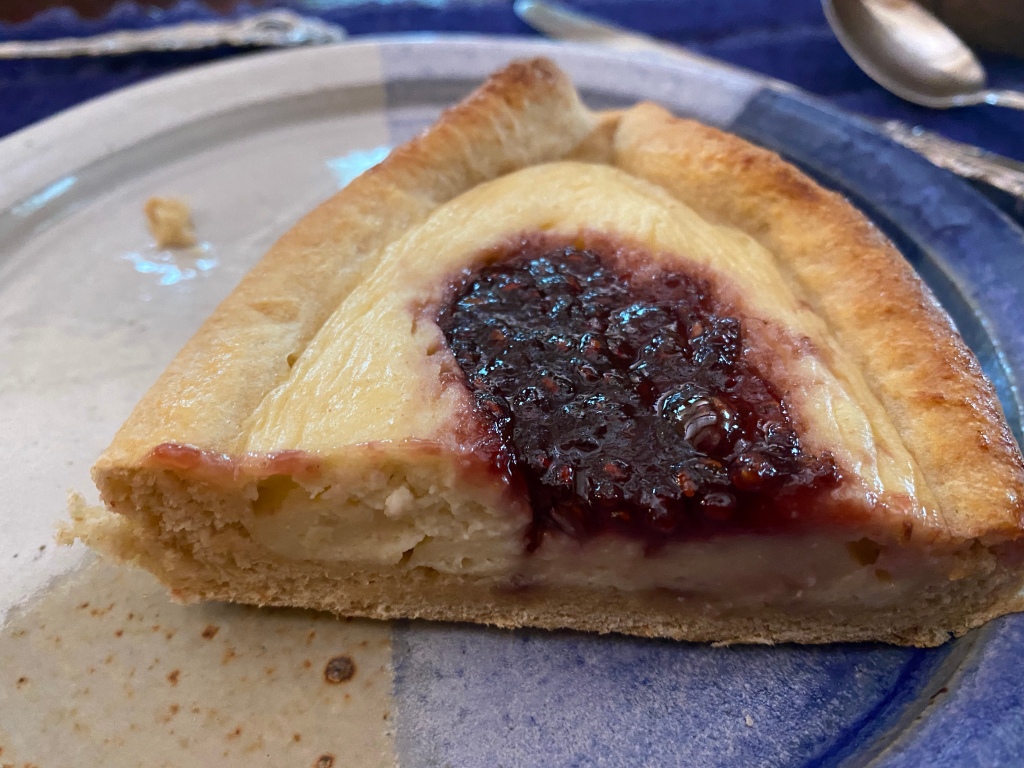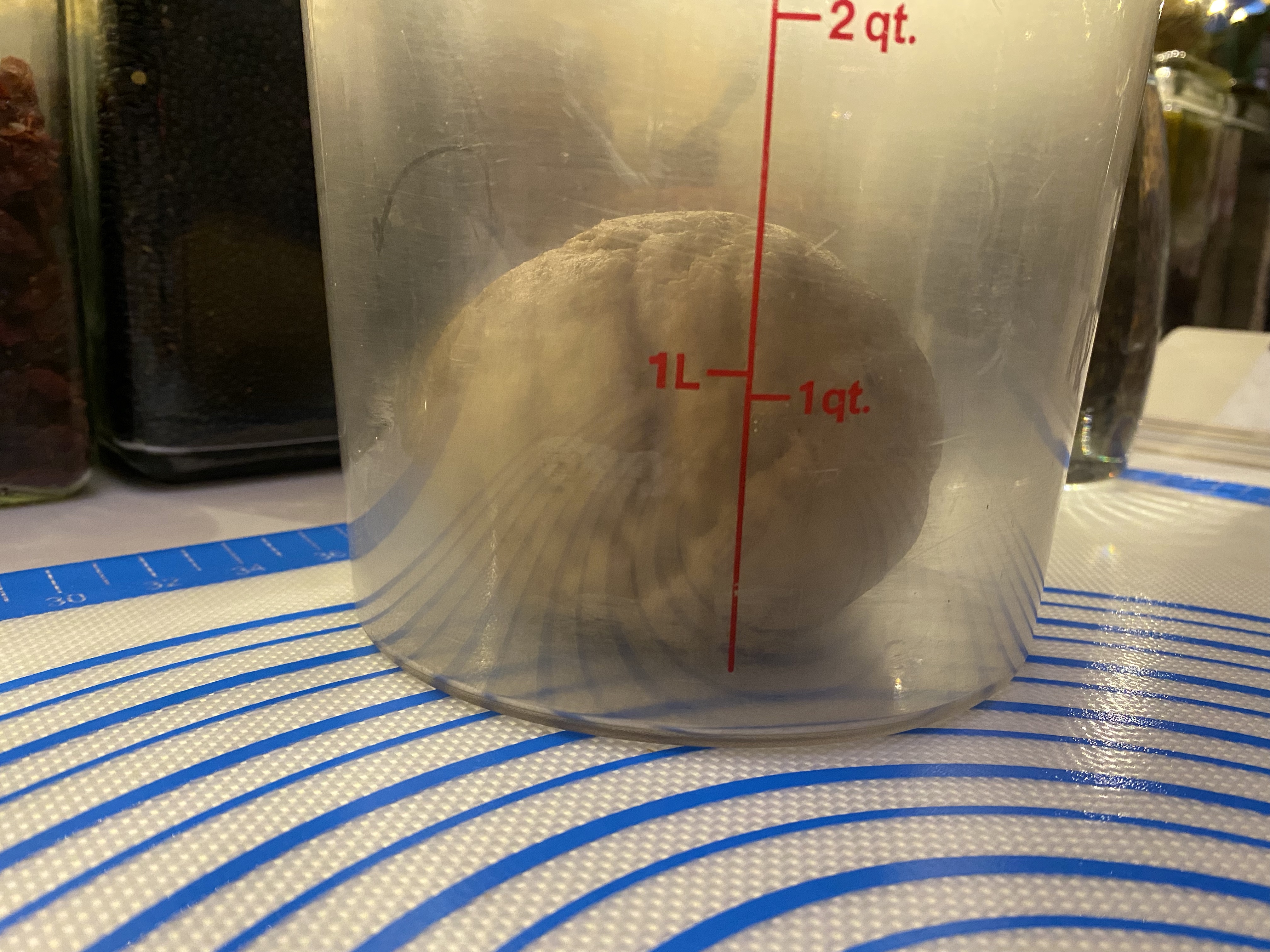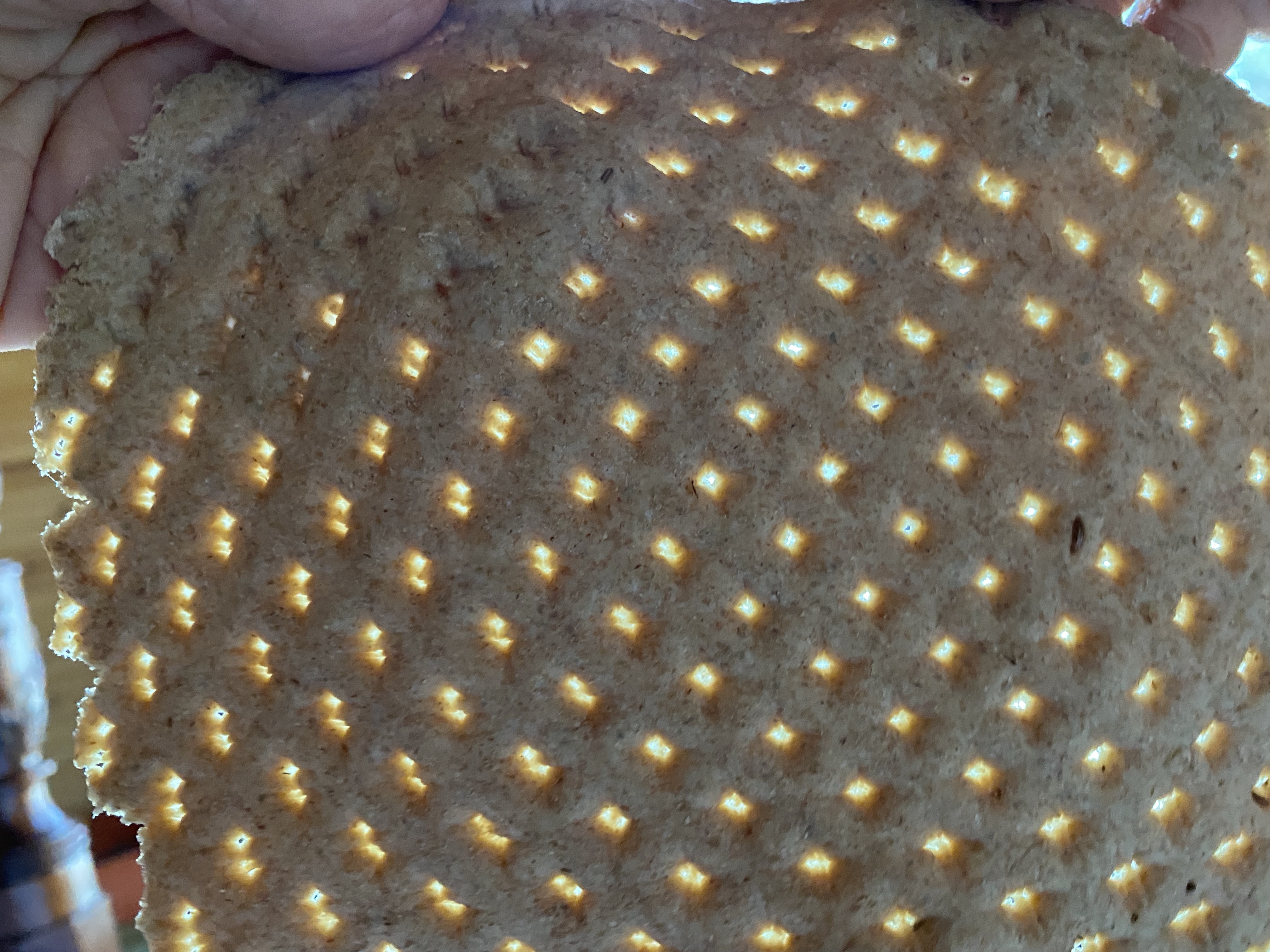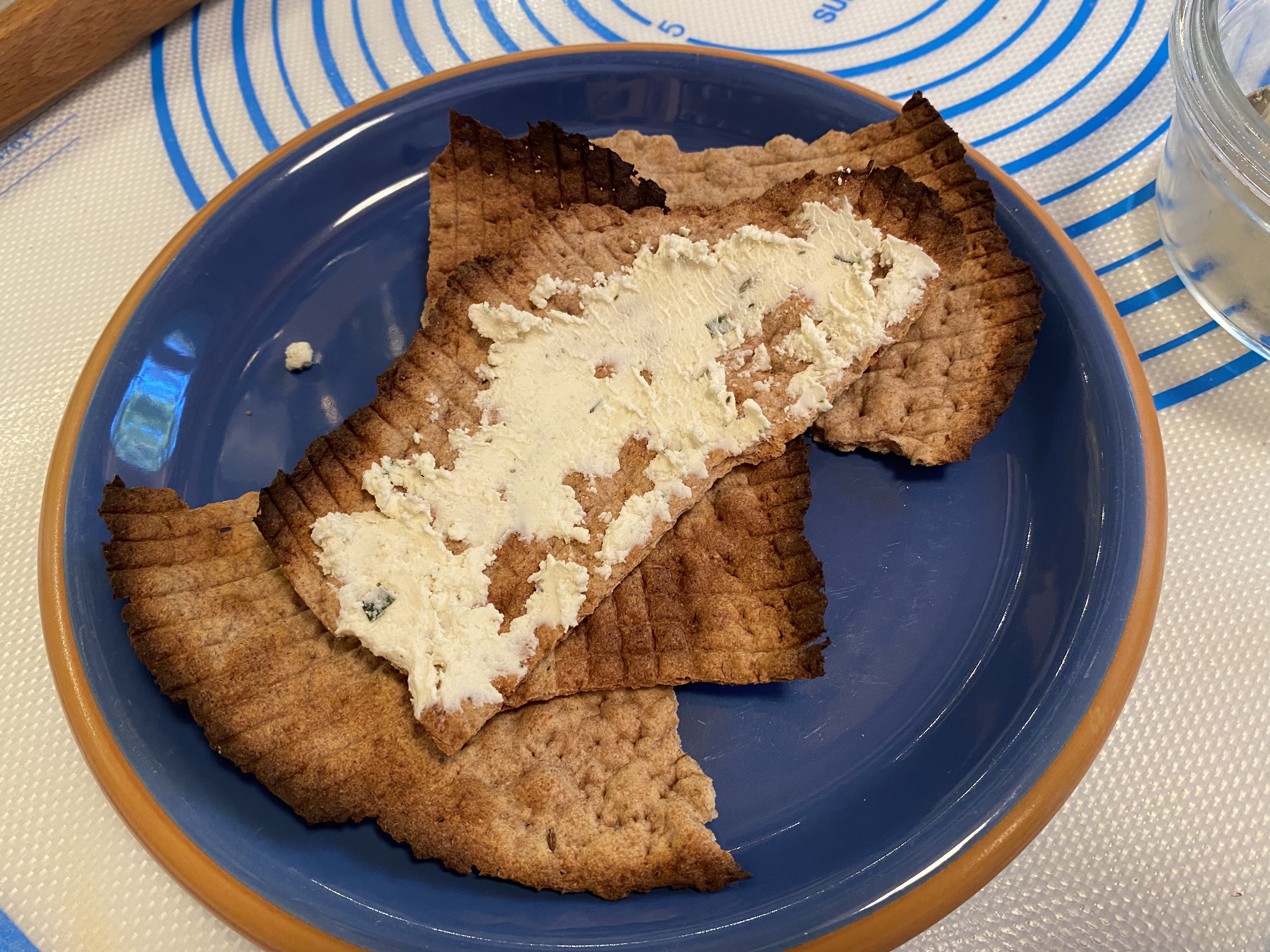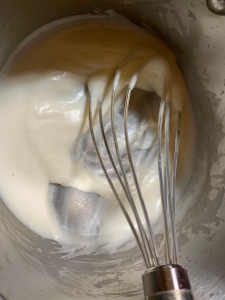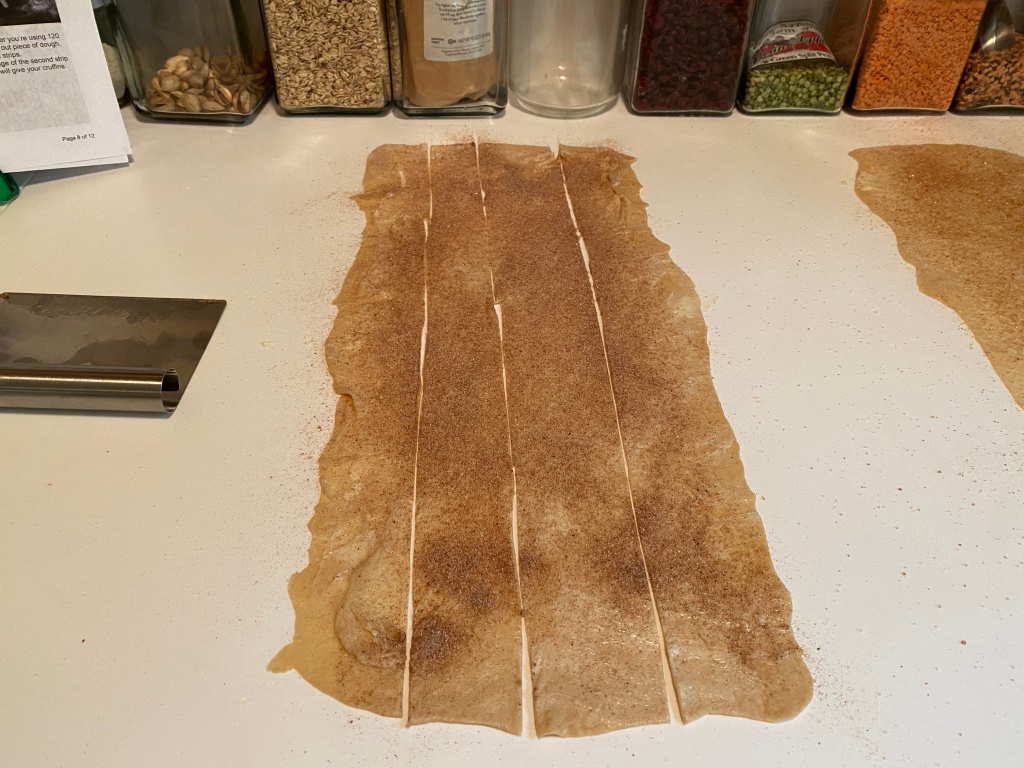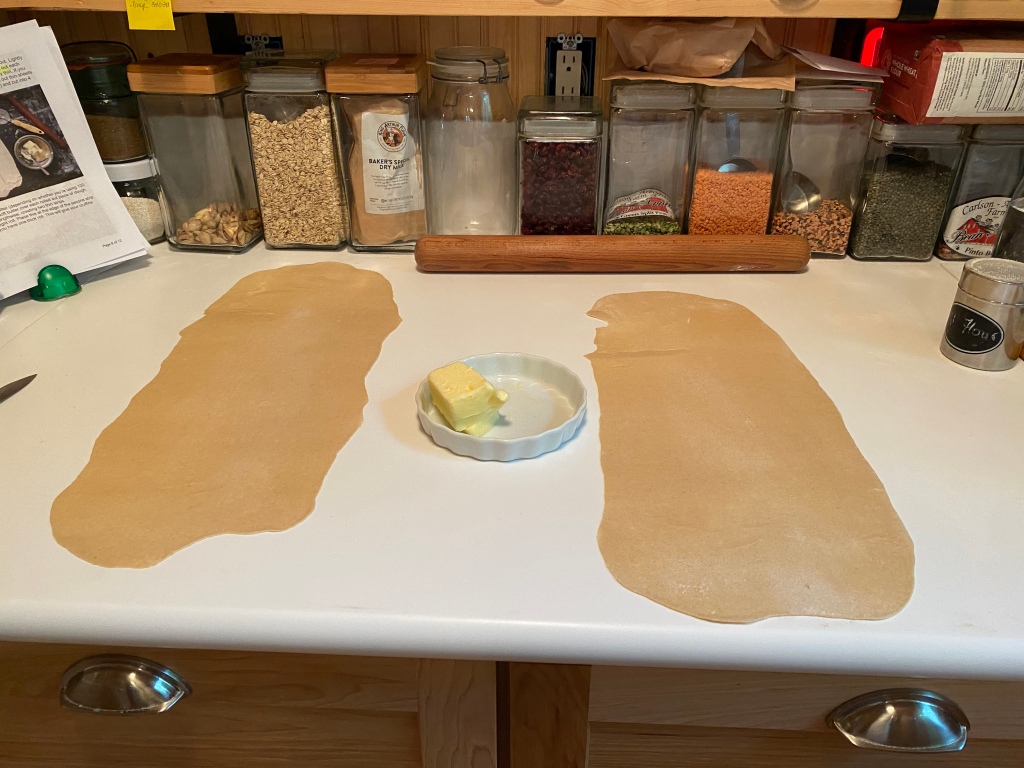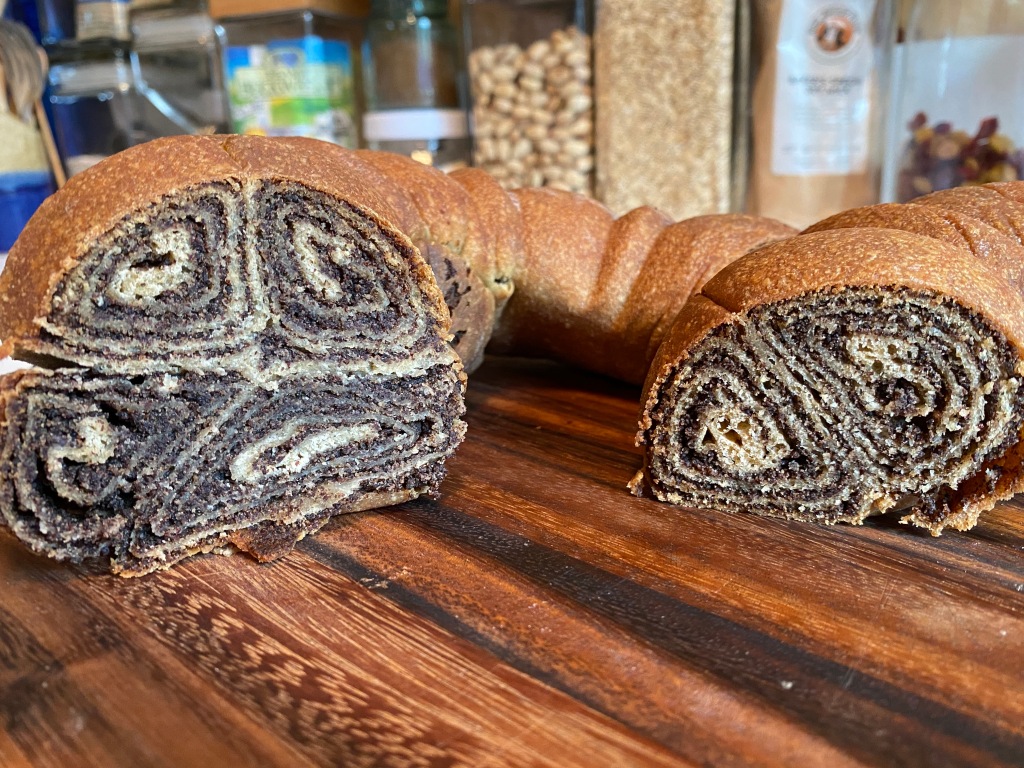Glass Bread ~ Pan Crystal ~ BBB
Flour Water Yeast ~ Basic Simple Same
Every bread recipe is the same simple basic: flour, water, yeast. And every time it comes out of the oven it’s
Dramatic Complex Different ~ Flour Water Yeast
Years ago, the Babes baked the infamous “Crock” aka Coccodrillo, Crocodile Bread AND Babe’s Nightmare. You will find the recipe in Carol Field’s The Italian Baker. At the time, it was the highest water ratio the Babes had ever dealt with. Now, along comes Kelly in AMessyKitchen bringing us Glass Bread with 106% water! There was at least one Babe with hellish memories of the “Crock” and the outcry was deafening. That Babe shall remain nameless at least here. It was not I. I found the “Crock” good bread and had no issues. Yeast can be fickle.
I strongly urge you to catch this sourdough version video because it shows the coiling turns so beautifully. I guess I would say this is a bread to be handled delicately once you turn the dough out to cut and then move to parchment paper. I was overwhelmed with how this dough transformed between coiling turns. Kelly advocates strong gluten bread flour to stand up to the huge amount of water and I would second that advice. Even I did not add flax or any whole wheat HOWEVER when I did the sourdough version I confess my starter is a whole grain rye and that is what I used.
Comparing my yeast and sourdough bakes, I think you will find the yeast has better color, better rise and many more holes. Both had wonderful oven spring but still the yeast was the winner there as well. The crust was crisper on the yeast. I did leave the yeast bread in the oven longer. I consider both versions excellent breads and would bake them again. I cut 6 rolls when doing the sourdough and find that the optimal size for sandwiches. I made travel sandwiches both times and it is excellent either way.

King Arthur recipe:
500g water
500g King Arthur Unbleached Bread Flour
2.5g (3/4 teaspoon) instant yeast
10g salt
15g olive oil, for the pan
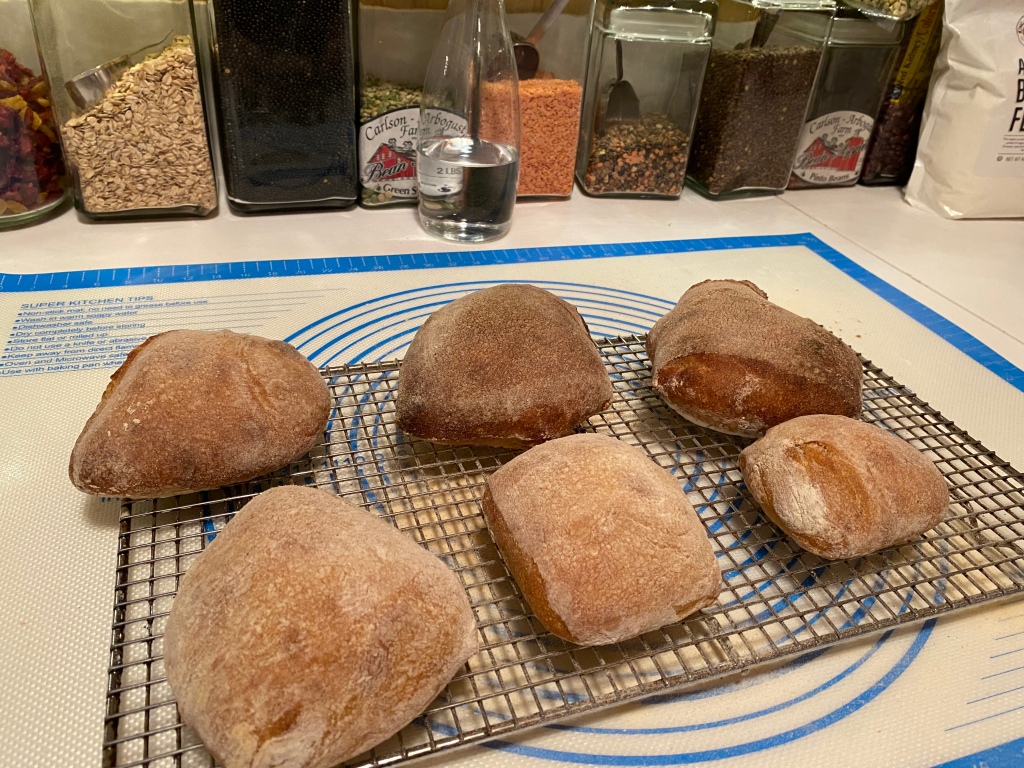


To make the dough: Weigh your flour; or measure it by gently spooning it into a cup, then sweeping off any excess. (To measure by volume, see “tips,” below.)
In a medium bowl, mix the water, flour, yeast, and salt until thoroughly combined and homogenous. Note: The dough starts off very slack and wet. That’s OK; it will transform itself through time and folds.
Oil a two-quart rectangular baking dish (10” x 7”) with the olive oil. If you don’t have a 2-quart dish, an 8” or 9” square pan will work. Don’t worry about any pan you use being oven-safe; you won’t be baking the bread in it.
Pour the dough into the pan. Check the dough’s temperature by inserting a digital thermometer into the center. If it’s less than 72°F, move the pan to a warmer spot, e.g., your oven with the light turned on.
Cover the pan and allow the dough to rest for 20 minutes.
Start with a bowl fold: Use your wet hands to grab a section of dough from one side, lift it up, then press it down into the middle. Repeat this eight to 12 times.
Cover the dish and allow the dough to rest for 20 minutes.
Then do a coil fold: With wet hands, reach under the dough and stretch the middle upward until the dough releases from the dish. Roll it forward off your hands, allowing it to fold over (or “coil”) on itself. This is called a coil fold. Rotate the dish 90 degrees (a quarter turn) and repeat. Continue performing this folding action until the dough feels like it won’t stretch and elongate easily, usually four to five times initially. Note: You’ll be doing this three more times, each time building strength and developing the dough. See “tips,” below, for more details,
Cover the pan and allow the dough to rest for 20 minutes.
Repeat the coil fold. Cover the bowl and allow the dough to rest for 20 minutes.
At this point, the dough should be easier to handle and feel tighter. Repeat the coil fold using only two or three folds this time. Cover the bowl and allow the dough to rest for 20 minutes.
Repeat the coil fold one last time, using only one or two folds if the dough is relatively strong. Cover the bowl and allow the dough to rest for about 80 minutes.
To divide the dough: As gently as possible, turn the dough out onto a heavily floured surface, maintaining the rectangle or square shape – be careful not to deflate the delicate dough. Sprinkle a generous amount of flour on top of the dough, leaving no exposed sticky spots. Then, working as gently as possible, use a bench knife or other sharp knife to divide it into four pieces. Gently place two pieces on a piece of parchment, leaving space between them. Repeat with the remaining two pieces of dough, placing them on another piece of parchment.
Allow the loaves to rest at room temperature for 2 hours, uncovered. While the loaves are resting, preheat the oven to 475°F with a baking stone or steel on a lower rack. (If you don’t have a stone or steel, see “tips,” below.) Allow the oven to preheat for 1 hour to ensure it’s thoroughly heated. The loaves are ready for the oven when there are a few large bubbles on the surface of each loaf and they feel light and airy.
To bake the bread: Carefully slide the two loaves (still resting on the parchment) into the oven onto the preheated stone or steel. If space is tight and the full sheet of parchment won’t fit on the stone or steel, cut the parchment between the two loaves and arrange them as best you can. Allow the other two loaves to continue to rest.
Bake the loaves for 15 minutes, then transfer them, from the stone or steel, directly onto a rack in the upper third of the oven for an additional 13 to 15 minutes. (Leave the stone in place.) Moving them to the rack allows the baking stone or steel to become hot again in preparation for the next two loaves. After a total of 27 to 30 minutes of baking, remove the loaves from the oven and allow them to cool on a rack.
Repeat the process with the two remaining loaves. Cool the bread fully before slicing.
Storage information: Wrap the bread loosely and store it at room temperature for up to several days; freeze for longer storage.
SOURDOUGH VERSION
Formula for four:
470g strong flour
470g water (400+70)*
10g olive oil
11g salt
100g whole grain rye starter (100% hydration)
Method:
Mix flour and water.
Autolyse above for 45min.
Add 100g starter to autolysed flour and water and work it together well;
Give that a 60 minute rest.
Combine 70g reserve COLD water & 11g salt,
add half and fold/mix together.
Allow 10min rest
Add remaining water/salt & mix well;
add EVO & mix,
Allow 15 min rest
1. Folds: Oil square cake pan,
add dough and do a few large (coil) folds.
45 min rest
2. Folds: Large (coil) folds in thirds, then rotate 90 and fold in thirds,
rest 45 min
3. Folds: Repeat folds,
rest 45 min Folds:
4. Repeat folds,
rest 45 min Folds:
5. Repeat folds,
In retrospect I believe I should have given the dough another 2 folds; every fold and rest really give this dough strength.
Overnight in fridge for cold bulk
Room temp rest 60 minute .
Heavily flour table and pour the dough out, ~ if you watch the video you’ll see I think the move that works the best: just turn the pan upside down, hold it 2-3 inches above and let it fall out.
divide into 4 pieces – I did 6 for my 2nd bake and place on parchment.
60 min rest
Bake on steel at 500ºF for 8min with steam,
drop to 410 and bake for 20 minutes – I would give it 5 or more minutes more next time.
*Note that the 70g is mixed with the salt and kept aside to incorporate after initial autolyse..
Sample timeline:
_______p.m. Mix the dough ____________
_______p.m. Bowl fold ____________
_______p.m. Coil fold #1 ____________
_______p.m. Coil fold #2 ____________
_______p.m. Coil fold #3 ____________
_______p.m. Coil fold #4 ____________
_______p.m. Coil fold #5 ____________
_______p.m. Coil fold #6 ____________
_______p.m. Coil fold #7 ____________
_______p.m. Coil fold #8 ____________
______p.m. Coil fold #9 ____________
______p.m. Coil fold #10 ____________
_______p.m. Divide ____________
_______p.m. Bake ____________
Want to bake with us? We’d love to have you bake the Glass Bread with us.

This bread makes sparklingly crisp sandwich rolls. Really, you just need to try it!





